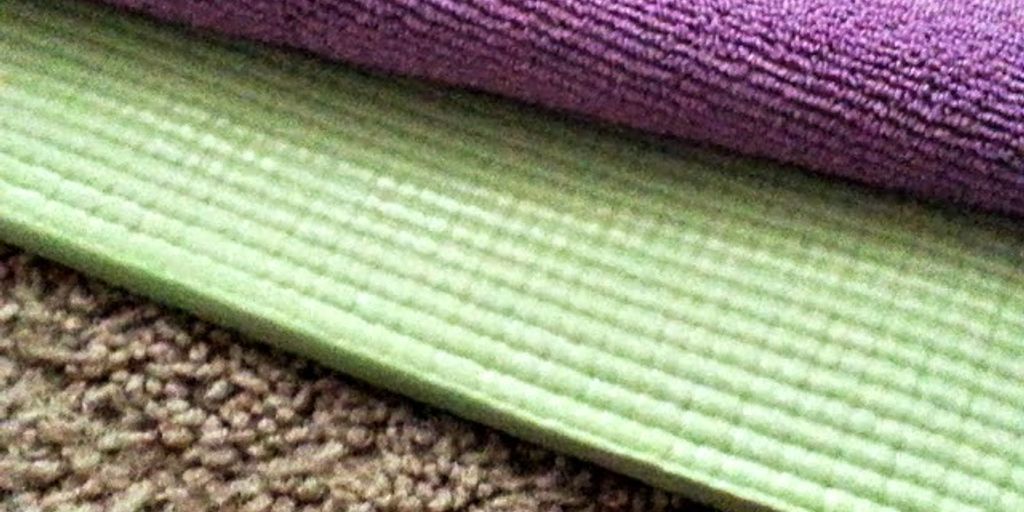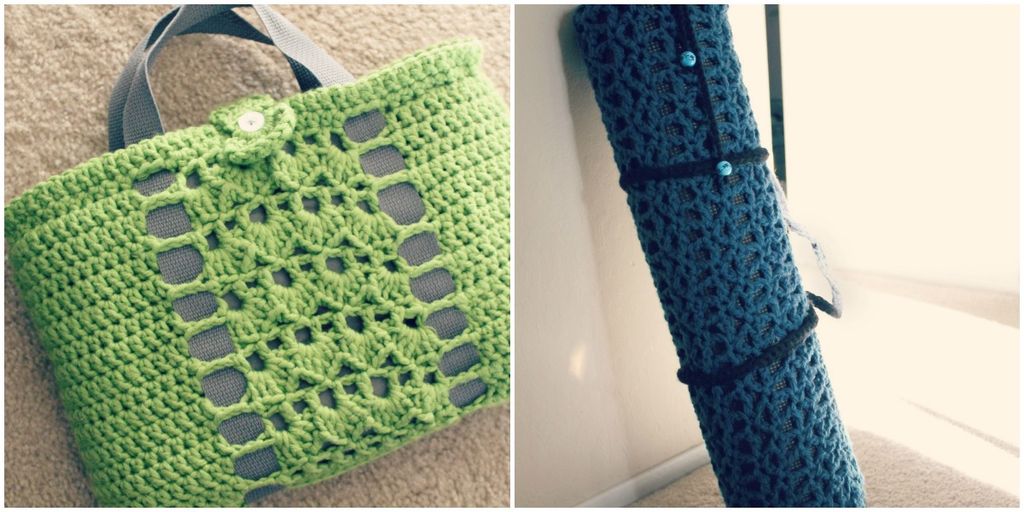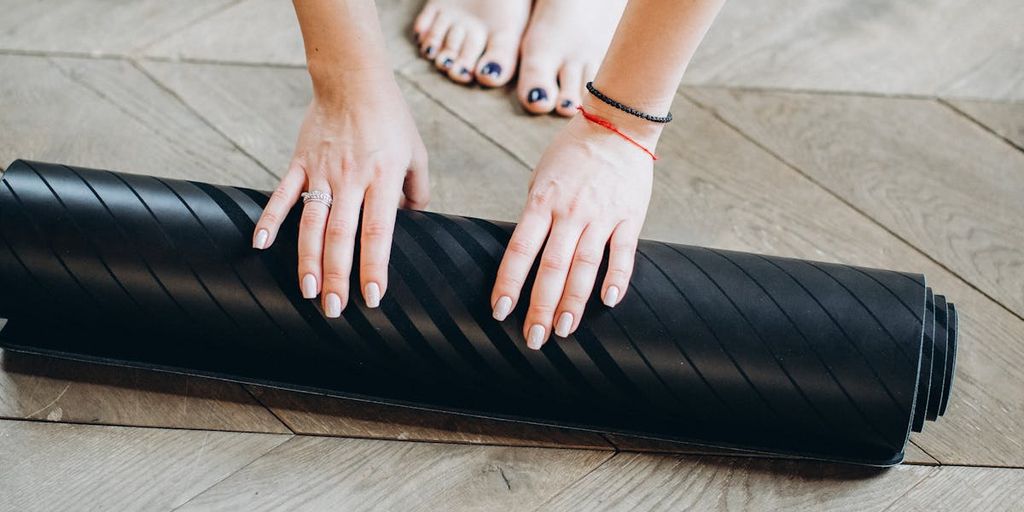
How to Use a Yoga Mat on Carpet for the Best Practice Experience
Practicing yoga on a carpeted floor can offer both benefits and challenges. While the added cushioning can be gentle on your joints, achieving stability and preventing slippage requires some extra considerations. This article will guide you through choosing the right yoga mat, preparing your carpet, and techniques to enhance your practice experience on carpeted floors.
Key Takeaways
- Choosing the right yoga mat material and thickness is crucial for stability on carpeted floors.
- Preparing your carpet by cleaning and creating a stable surface can prevent slippage and enhance your practice.
- Engaging your core muscles and adjusting poses can help maintain stability on uneven carpet surfaces.
- Using props like yoga towels or blankets can add extra grip and support during your practice.
- Regular maintenance of both your carpet and yoga mat will extend their lifespan and ensure a better practice experience.
Choosing the Right Yoga Mat for Carpeted Floors
When practicing yoga on carpeted floors, selecting the right yoga mat is crucial for a comfortable and effective session. Material considerations are essential, as some materials provide better grip and durability on carpet. Look for mats made from natural rubber or TPE, which offer excellent traction and are eco-friendly. PVC mats can also be a good choice, but they may not be as sustainable.
Thickness and Cushioning
The thickness of your yoga mat plays a significant role in your practice. A mat that is too thin may not provide enough cushioning, while a mat that is too thick can make balancing poses more challenging. Ideally, a mat with a thickness of 4-6mm is suitable for carpeted floors, offering a balance between comfort and stability.
Grip and Stability
Grip and stability are paramount when practicing on carpet. Mats with a textured surface or a non-slip bottom layer can help prevent slippage. Additionally, some mats are specifically designed for use on carpet, such as the original yoga mat board for carpet, which provides a stable platform for your practice.
Choosing the right yoga mat can significantly enhance your yoga experience on carpeted floors, providing the necessary support and stability for various poses.
Preparing Your Carpet for Yoga Practice
Cleaning and Maintenance
Before starting your yoga practice, ensure your carpet is clean and free of debris. Regular vacuuming is essential to remove dust and dirt that can affect your practice. For a deeper clean, consider using a carpet cleaner periodically.
Creating a Stable Surface
A stable surface is crucial for effective yoga practice. If your carpet is too plush, it might be challenging to maintain balance. You can place a firm board or a piece of plywood underneath your yoga mat to create a more stable base.
Using a Yoga Towel or Blanket
To enhance grip and stability, you can use a yoga towel or blanket on top of your mat. This can help absorb sweat and provide additional traction, making your practice more comfortable and secure.
Preparing your carpet properly can significantly improve your yoga experience, making it more enjoyable and effective.
Techniques to Enhance Stability on Carpet
Engaging Core Muscles
To maintain stability on carpet, it's crucial to engage your core muscles. A strong core helps you balance better and reduces the risk of slipping. Focus on tightening your abdominal muscles during poses to create a stable foundation.
Adjusting Your Poses
When practicing yoga on carpet, you may need to adjust your poses slightly. For example, widening your stance can provide more stability. Pay attention to how your body feels and make necessary adjustments to maintain balance.
Using Props for Support
Props like yoga blocks, straps, and bolsters can be incredibly helpful. They provide additional support and help you maintain proper alignment. Consider using a yoga towel or blanket to create a more stable surface. Properly position your yoga mat and use techniques like anti-slip underlays to prevent slipping and maintain balance.
Benefits of Practicing Yoga on Carpet
Practicing yoga on carpeted floors offers several unique benefits that can enhance your overall experience.
Added Cushioning for Joints
One of the primary benefits of practicing yoga on carpet is the added cushioning it provides for your joints. This extra layer of padding can be particularly beneficial for those with sensitive knees or wrists, as it helps to reduce impact and strain.
Enhanced Comfort
Carpeted floors can offer a more comfortable surface for your practice. The soft texture of the carpet can make certain poses more enjoyable and less harsh on your body, allowing you to focus more on your practice rather than any discomfort.
Versatility of Practice Space
A carpeted area can be a versatile practice space. Unlike hard floors, carpets can adapt to various types of yoga mats and props, making it easier to create a stable practice environment. This versatility allows you to practice different styles of yoga without needing to change your setup.
Practicing yoga on carpet can be a great way to ensure a stable practice, especially if you take steps to check durability, clean the carpet, and use a non-slip mat.
Common Challenges and Solutions
Dealing with Slippage
One of the main challenges when using a yoga mat on carpeted surfaces is slippage. To combat this, consider using a non-slip mat or placing a yoga towel underneath your mat for added grip. Additionally, ensure your carpet is clean and free of dust, as this can contribute to slippage.
Managing Uneven Surfaces
Carpeted floors can often be uneven, making it difficult to maintain balance during poses. To address this, try using a thicker mat that provides more cushioning and stability. You can also place a firm board or a piece of plywood under your mat to create a more stable surface.
Preventing Carpet Wear and Tear
Practicing yoga on carpet can lead to wear and tear over time. To prevent this, rotate your mat regularly to distribute the pressure evenly. You can also use a yoga blanket or towel to protect the carpet from excessive friction and pressure.
Practicing yoga on carpeted floors presents unique challenges, but with the right strategies, you can enjoy a stable and comfortable practice experience.
Maintaining Your Yoga Mat on Carpet
Regular Cleaning Tips
To ensure your yoga mat remains in top condition, it's essential to clean it regularly. Experience comfort and durability with a cotton yoga mat by wiping it down with a gentle cleanser after each use. For deeper cleaning, consider soaking it in a mixture of water and mild soap, then air drying it completely before rolling it up.
Storage Solutions
Proper storage can significantly extend the lifespan of your yoga mat. Always store your mat in a cool, dry place away from direct sunlight. Using a mat towel for extra protection can also help maintain its quality. If space allows, consider hanging your mat to prevent it from retaining moisture and odors.
Extending Mat Lifespan
To get the most out of your yoga mat, follow these care tips for longevity. Rotate your mat regularly to ensure even wear and tear. Additionally, avoid using shoes on the mat to prevent damage. For those practicing on carpet, visit Yune Yoga for high-quality accessories that can enhance your practice and protect your mat.
Taking these steps will help you maintain a clean, durable, and long-lasting yoga mat, ensuring a better practice experience on carpeted floors.
Maintaining your yoga mat on carpet can be a breeze with the right tips and tools. Regular cleaning and proper storage are key to ensuring your mat stays fresh and durable. For more detailed advice and to explore our range of high-quality yoga mats, visit our website today!
Conclusion
Practicing yoga on a carpet with a yoga mat can significantly enhance your experience by providing the right balance of comfort and stability. By choosing the appropriate mat, ensuring it stays in place, and maintaining it properly, you can create an optimal environment for your yoga sessions. Remember to consider the thickness, material, and texture of the mat to suit your personal needs. With these tips, you can enjoy a safe, effective, and enjoyable yoga practice on carpeted surfaces.
Frequently Asked Questions
Can I use any yoga mat on carpet?
While you can use any yoga mat on carpet, mats with better grip and stability features are recommended for a more secure practice.
How thick should my yoga mat be for carpeted floors?
A mat that is at least 6mm thick is generally recommended for carpeted floors to provide adequate cushioning and support.
Do I need to clean my carpet before practicing yoga?
Yes, it's a good idea to clean your carpet to remove dust and debris, which can affect your practice and the longevity of your yoga mat.
Will practicing yoga on carpet damage my carpet?
Regular practice can cause some wear and tear on the carpet, but using a yoga towel or blanket can help protect it.
How can I prevent my yoga mat from slipping on carpet?
To prevent slippage, choose a mat with a non-slip surface and consider using a yoga towel or blanket for added stability.
What are the benefits of practicing yoga on carpet?
Practicing yoga on carpet offers added cushioning for joints, enhanced comfort, and versatility in practice space.


